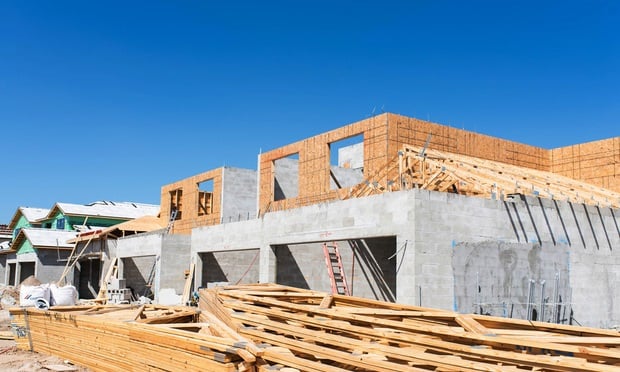PALM SPRINGS, CA-The demise of the homeownership dream is potentially the best thing to happen to multifamily last year. After all, every percentage point drop in the homeownership rate means another million households moved over to the rental pool. This is setting up the market for a very good few years, concurred the participants in a session focusing on submarkets across the country during the National Multi Housing Council’s Apartment Strategies Conference, which took place here yesterday.
But as well as the sector is doing, job growth is still a wild card. And, the experts added, it’s important to remain concerned about the class B and C markets, which aren’t experiencing the same rebound as the class A market.
Hessam Nadji, managing director of Marcus & Millichap and moderator of the panel, “Peeling the Onion: The Best and Worst Submarkets for Apartments,” presented the firm’s vacancy forecast for 2011. At the top of the list were New York City, with a 2.4% vacancy expected this year; Minneapolis, at 3.3%; San Diego and San Jose, 3.4% each; and New Jersey, 3.5%. At the opposite end of the list were the markets with the highest expected vacancies: Jacksonville, FL, 10.4%; Houston, 9.4%; Phoenix, 8.5%; Las Vegas, 8.3%; and Atlanta, 8.2%. Comparatively, the US average vacancy for 2011 is 5.6%.
The panelists—Rick Graf, president of Pinnacle; Greg Pinkalla, COO of Fairfield Residential Co.; Chuck Shallat, partner with Lincoln Property Co.; and Walt Smith, CEO of Riverstone Residential Group—generally agreed with Nadji’s assessments. They expect New York City, Boston and Washington, DC to display stellar performance this year, though DC may suffer a bit from all the construction it’s seeing. Other well-performing markets will be the San Francisco Bay Area, Seattle, parts of Los Angeles and Orange County, Denver, Austin,TX, San Antonio, Dallas/Fort Worth and some parts of South Florida. Philadelphia, Pittsburgh and Phoenix look promising, said Shallat, and Pinkalla added that there could be opportunities to buy in places like Phoenix, Las Vegas, Atlanta, North Florida and the Inland Empire. “Chances are, things aren’t going to get worse in these markets,” he said.
While conditions aren’t the same throughout all markets, the fact that even the worst markets are expecting some rent growth and single-digit vacancy is a good sign.
That would explain why apartments remain a favorite food group for pension funds. It’s where they still believe they’re going to get the best returns, commented Jim Bachner, executive vice president of acquisitions for Heitman LLC. In particular, fund sponsors like multifamily because it’s viewed as a good inflation hedge given its short leases, and because it’s further along in its recovery than other property types, stated Dale Gruen, a managing director at BlackRock Realty. “There’s strong interest in both core and opportunistic deals,” he said. “I think that as fear ebbs, greed is returning and they’re looking to yields. At the end, I think pension plans are going to be holding more core assets, at lower leverage.”
Pensions and other institutional investors were the main focus of the session, “From Wall Street to Main Street: Where Capital is Coming and Going,” moderated by David Schwartz, a managing member of Waterton Associates LLC. These days, equity is coming from a variety of sources, such as BlackRock, Heitman, Colony Capital, AREA Partners, and the like, said Greg Vorwaller, an EVP with Cushman & Wakefield. High-net worth families looking to get into development deals will also provide equity for deals.
There have been a lot of new entrants to the market—there’s around 20 new multifamily-focused funds in the business this year, noted Schwartz. But not all will be successful. Ron Zeff, CEO of Carmel Partners Inc., revealed that in an informal poll of the firm’s investors—which tend to be endowments and foundations—he found that any new fund that wasn’t in the market before is going to have a hard time attracting investors.
Development could be making a comeback, if the activity of the builders on the day’s last panel is any indication. Most of the participants in the session, “The Build or Not to Build? That Is the Question,” moderated by Apartment Realty Advisors chairman Gary Kachadurian, are currently active in Washington, DC, for instance. Still, Bill Sengelmann, SVP of real estate investments with Camden Property Trust, said that it’s hard to find good land sites to buy.
The good thing, says Bozzuto Group chairman and CEO Thomas Bozzuto, is that costs are down 20% to 25% from the peak. The bad news is that time may be running out to develop in certain markets. “I thought the window for deals and opportunities would be open for at least another year. I’m not sure it hasn’t closed already, at least in places like Washington, DC,” he said. “If you’re betting on a project to start in three to four years, you’re making a very big bet on interest rates. That’s not a bet I’m willing to make.”
And construction costs will probably be up by about 20%, too, added R. Scot Sellers, chairman and CEO of Archstone.
One slightly positive point, he noted, is that financing is returning, albeit modestly, in the form of larger banks coming back to the market. “But they’re cautious,” he said. “You need a lot of equity to get a construction loan, but it’s still very limited. And if you’re looking for equity capital, your equity partner is going to look first at the revenue potential in the market and the gap between the cost to buy versus replacement cost.”
In terms of development, it’s important to keep the needs of the renters in mind—that is, the younger generation, said Sengelmann. Bozutto concurred, noting that “the biggest change the industry has seen in the past few years has been a shift in projects, going from a standard design to having multiple components like retail, a transit stop or a garage.” Today’s projects tend to be hipper, edgier, with brighter units, built to LEED standards and technology friendly.
“The business has changed,” said Sellers. “But if you boil it down, the renter is buying location. That’s what matters. Visibility is important. Center City locations are favored. And the presentation and feel of the product is important. If you get the location and the execution right, you’re good.”
Despite the activity in the market, none of the participants in the panel are worried about the prospect of overbuilding in the next three to five years. “It’s just a matter of being conscious of what’s happening in the market as we move forward,” said Paul Doocy, EVP of Real Estate Capital Partners LP.
“Today, with the advent of publicly traded companies, there’s more information out there about all the markets and submarkets,” commented Sellers. “That’s what’s going to keep construction in check. Information is now universally available, and capital sources keep up on it.”
© 2025 ALM Global, LLC, All Rights Reserved. Request academic re-use from www.copyright.com. All other uses, submit a request to [email protected]. For more information visit Asset & Logo Licensing.







